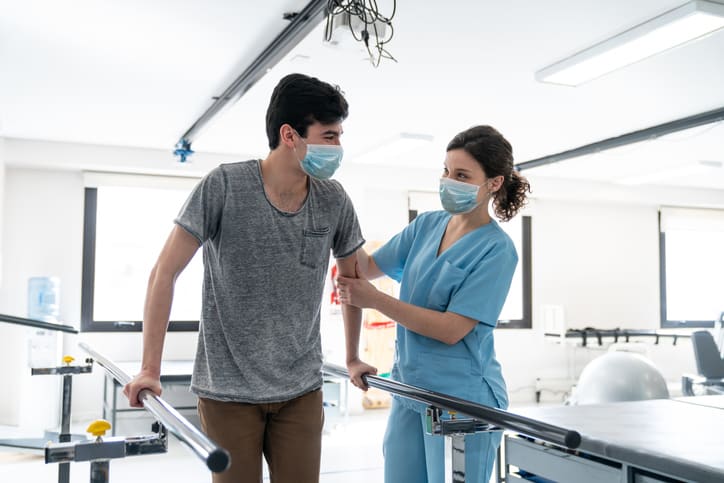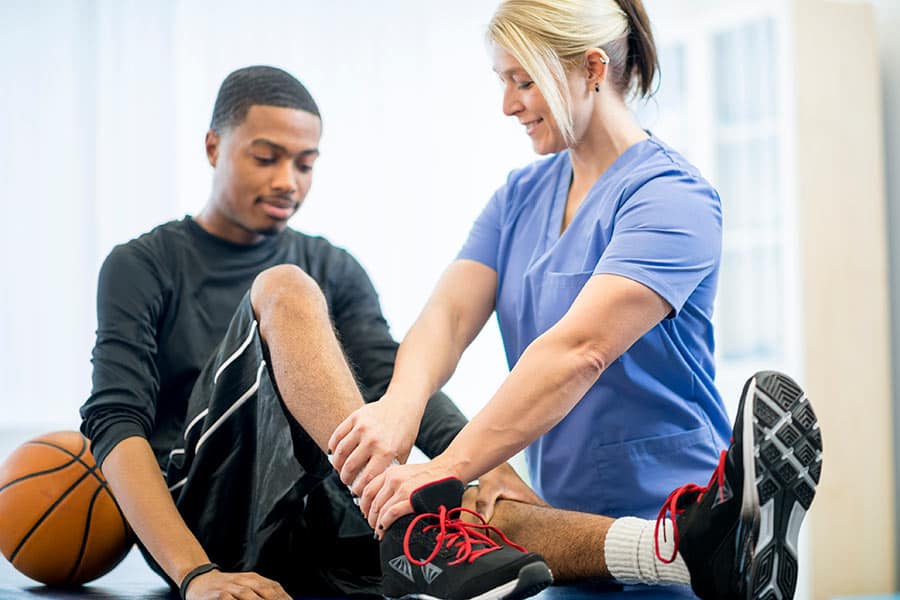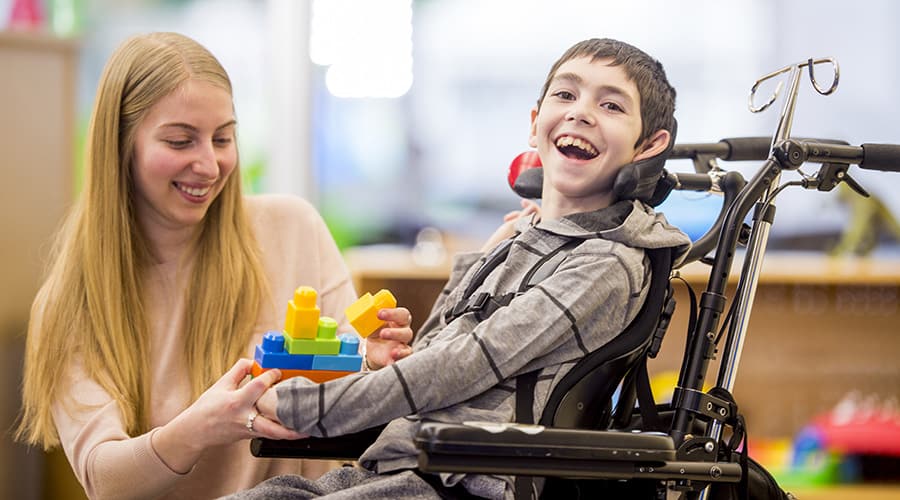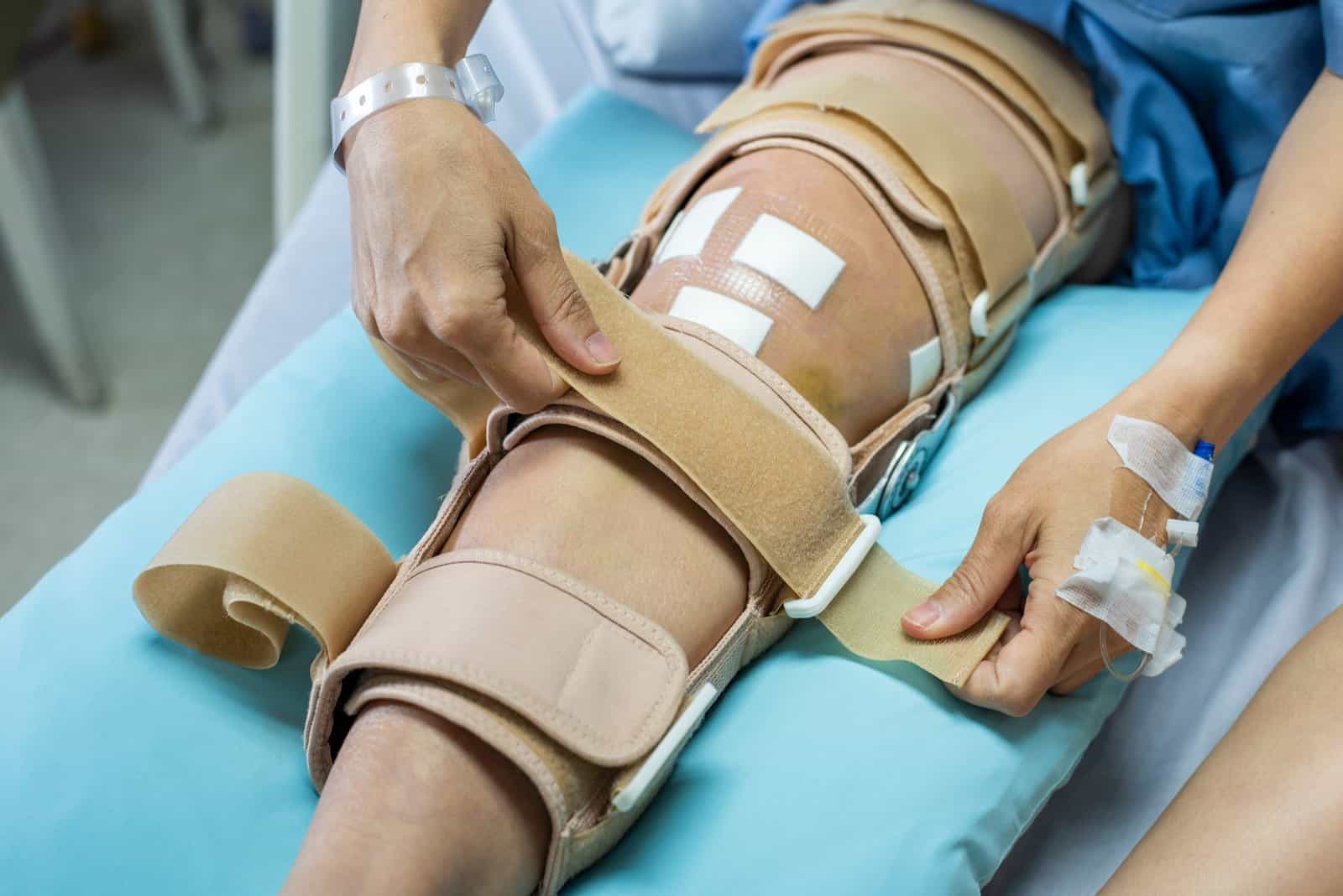Concussions, or mild traumatic brain injuries (TBIs), are a common sight in both private physical therapy clinics and hospitals. Proper and complete concussion management is crucial for optimal recovery. Physical therapists play a key role in the rehabilitation process. They not only work on relieving symptoms, but also in restoring the patient’s full function.
This article outlines a guide to complete concussion management for physical therapists, helping them understand epidemiology, pathophysiology, assessment, care, and rehabilitative strategies.
Recommended course: Concussion Management: A Comprehensive Evidence-Based Approach for the Physical Therapist
Epidemiology: Understanding concussions
Research is constantly evolving in terms of how to diagnose, evaluate, and treat concussions, forcing rehab professionals to constantly adapt to new treatment guidelines. This is a good thing. Concussions are a difficult injury to understand, and the medical approach to it is becoming increasingly beneficial to the patients.
Medical professionals define a concussion as a brain injury occurring due to sudden jolts or impacts to the brain, potentially causing temporary changes in function. The sheer number of annual concussions is astounding. The Centers for Disease Control and Prevention (CDC) estimate at least 1.5 million concussions happen in the USA every year. However, the number is likely much higher since many concussions go unreported, and about 90% of those concussions are mild cases.
The number of concussions is greater in males than females, with the most happening between the ages of 15-19. About 29% of all concussions involve a loss of consciousness, and certain sports tend to have the highest incidents, including:
- American football
- Hockey
- Lacrosse
- Soccer
These incidents are more frequent in game settings than practices, suggesting that competitive sports have a higher incidence of concussions.
Concussion signs and symptoms
Concussions are a unique injury that present with different signs and symptoms based on the severity, type, and person.
- General symptoms: Headaches, cervical neck pain, dizziness, blurred vision, nausea, light/sound sensitivity, balance problems.
- Physical signs: Loss of consciousness, amnesia, neurologic deficits.
- Behavioral changes: Irritability, sadness, anxiety, depression.
- Cognitive deficits: Impaired memory, poor concentration, cognitive fatigue.
- Sleep problems: Difficulty falling asleep, drowsiness, excessive sleep, fragmented sleep.
Physical therapists need to perform a detailed examination, as the signs and symptoms of concussions vary greatly as shown above. Also, research suggests that a lack of symptoms does not rule out concussions when dealing with head impact injuries. It’s important to be mindful of the buildup of damage that non-symptomatic concussions can cause if left untreated.
Diagnosing a concussion
Concussions cannot be diagnosed using standard MRIs or CT scans as there are no objective biomarkers. However, neuroimaging may be used to rule out hemorrhage, edema, or white matter changes when the injury does not improve.
Instability of the cervical spine sometimes causes a persistence in concussion symptoms, in which case imaging may be helpful.
Pathophysiology of concussions
A series of complex and disruptive events happen within the brain following a concussion, typically resulting in functional and clinical symptoms. While research is still actively attempting to understand the exact mechanisms, these are part of the events:
- Mechanical impact: A sudden impact or acceleration/deceleration force is what’s thought to begin the neurometabolic cascade of events. This is commonly due to a rapid head movement.
- Damage to brain tissue: The brain’s tissue temporarily compresses and stretches due to impact.
- Ionic shifts: The normal balance of ions in the brain (e.g. potassium and calcium) is disrupted, affecting the function of neurons. This interferes with normal cellular processes.
- Increased release of neurotransmitters: An abnormal release of neurotransmitters due to mechanical forces can lead to excessive excitation of neurons, contributing to concussion symptoms.
- Neuroinflammation: An inflammatory response may be initiated in the brain, causing further symptoms.
Physical therapy assessment of concussions
Physical therapists must be mindful of the different symptoms (or lack of) that concussions may present and assess with utmost care. The main goal is to return the patient to regular activity and resolve symptoms, so the assessment needs to reflect these goals.
A thorough patient history is crucial for understanding the nature of the concussion and building a relationship with the patient. The rehab professional’s goal is to determine the initial and current symptoms, cause of concussion, and any risk factors.
This includes looking at:
- Previous medical issues: Existing medical conditions, prior concussions, disabilities, and head, neck, or face injuries.
- Social history: Extracurricular activities (e.g. sports), school/work environments.
- Current concussion: Mechanism of injury, initial symptoms, occurrence of loss of consciousness, seizure, or amnesia, and current triggers and symptoms.
- Initial care: When, how, and if the concussion was officially diagnosed.
- Current medication: What prescribed/unprescribed medication is being/was taken.
- Severe symptoms: Transient, sudden, or severe symptoms may require immediate referral to a physician or emergency care.
Depending on the history, the physical therapist may opt for different tests that could rule-in or rule-out a concussion.
- Vestibulo-ocular system issues
- Cervicogenic system issues
- Benign paroxysmal positional vertigo
- Ligament laxity
- Proprioceptive issues
Complete concussion management: Screening tools and interventions
Utilizing standardized assessment tools like the Post-Concussion Symptom Scale (PCSS) and Graded Symptom Checklist (GSC) can help the rehab professional and patient track symptom and function improvement.
The assessment results will indicate what intervention strategy is best, which can include many things.
Rest
Rest is key especially in the early stages of concussion rehabilitation. Physical therapists should emphasize the importance of rest to allow the brain to heal. This helps prevent further injury and sets the stage for a gradual return to activity. PTs must guide their patients through this phase while monitoring symptoms and adjusting the treatment plan accordingly.
Return to learn strategies
A gradual return to stimulating activities such as school and work should proceed depending on the patient’s symptoms. The strategy needs to be a step-by-step process, with patients taking a step back if symptoms return or worsen:
- Step 1: Complete brain rest
- Step 2: Light brain activity (e.g. limited reading)
- Step 3: Modified activity (e.g. gradual increase in screen time, quiet light studying)
- Step 4: Near normal activity (e.g. gradually progressing towards normal as symptoms allow)
- Step 5: Full return
Return to activity
Returning to normal sports and activities is a unique process for each patient and should be paired with careful symptom monitoring. Start with activities that don’t exacerbate symptoms, slowly moving to:
- Light exercise
- Sport-specific exercise
- Non-contact drills
- Full contact practice
- Return to play
The specifics of each step will depend on the goals and previous capabilities of the patient. Physical therapists should adjust as needed.
Exercise rehabilitation
Like return to play strategies, exercise should gradually be increased to return the patient to normal physical function. This may include vestibular, ocular, and cervicogenic training.
Building functional strength and progress in these areas will depend on the effects the concussion has on the patient. Rehab professionals should proceed in a gradual and very controlled manner.
Educating patients on concussion management
Teaching patients about proper concussion management, awareness of symptoms, and expected steps along the path of recovery is crucial in building adherence to the rehab plan and a positive outcome.
Dealing with a concussion can be a frightening prospect for patients. Educating them on the process often helps them manage their recovery journey much better.
Physical therapists should stay informed about the continually evolving field of complete concussion management, pursuing continuous learning and prioritizing individualized patient care. Rigid guidelines have been abandoned for these individualized approaches, with best practices including a gradual return to activity, patient education, and constant monitoring.





